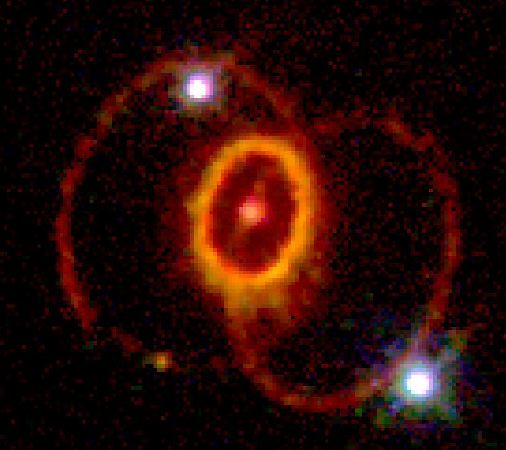Supernovae
This World Wide Web page written by
Dan Styer,
Oberlin College Physics Department;
http://www.oberlin.edu/physics/dstyer/Astronomy/Supernovae/index.html;
last updated 2 November 2000.
A supernova is an exploding star. A high-mass main sequence star evolves into
a supergiant, which switchbacks back and forth on the Hertzsprung-Russell
diagram as its
core grows ever hotter and its nuclear furnace produces ever heavier elements.
Soon after its innermost core begins producing iron, the most stable nucleus,
a crisis occurs. The star produces so much energy that it explodes with
a burst that sends its outer layers flying off into space at
about 850 miles per second.
During this so-called supernova explosion the star shines, for about a
month, as brightly as 600 million suns. Because so much happens
so quickly, supernova explosions are not well-understood.
Supernovae are rare. In the last millenium, humanity has recorded only four
in our galaxy.
The 1054 Supernova
Chinese records
show that in July or August of 1054 (probably on 4 July) a "guest star"
appeared in the constellation Taurus. This star was as bright as
the full moon and visible during the daytime for a month.
There is also some evidence that this supernova was noticed
by European and
Native American
cultures. (A general history is available
here.)
If, today, we train our telescopes at the site of the 1054 supernova,
we find the Crab Nebula. (This is also known as M1: the first item on
Messier's list of "fuzzy objects".)

The Hubble Space Telescope has given us detailed views of
the Crab Nebula. Here are the edges:
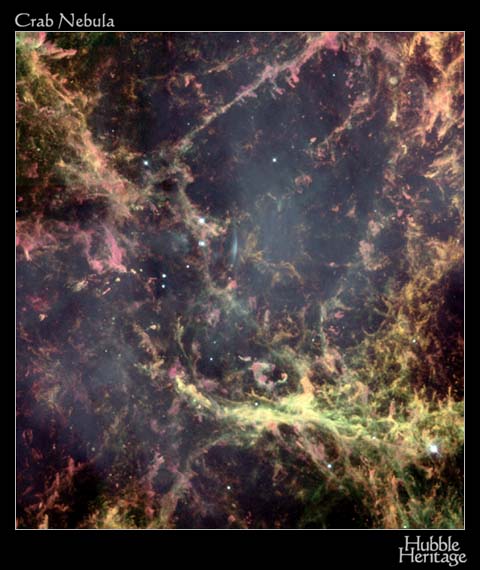
And here is the center:
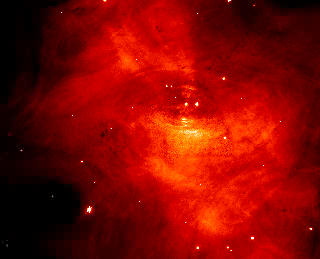
The little star surrounded by ovals is all that remains of the supernova's
core. We will see later that this is a neutron star.
The 1572 Supernova
On 11 November 1572, Danish astronomer Tycho Brahe observed
an "extra star", about as bright as Jupiter,
in the constellation Cassiopeia. Today, this
is often called "Tycho's supernova". Its remnant is
hardly noticeable using visible light, but its X-ray image
is remarkable:
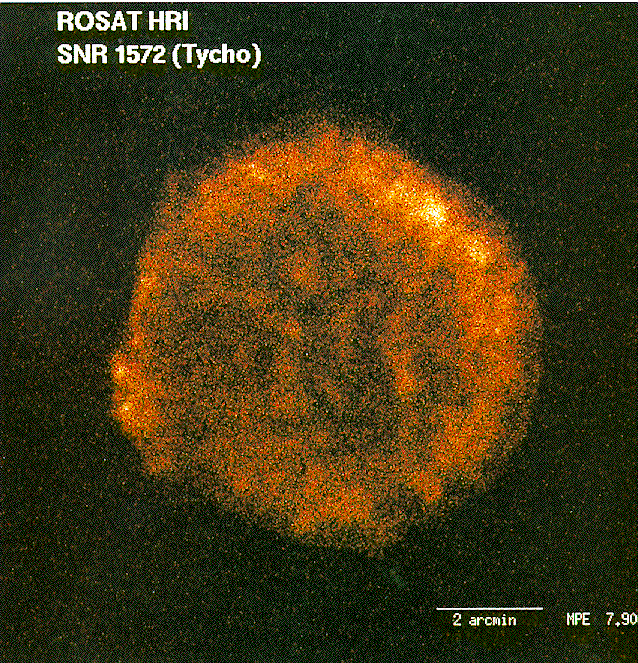
The 1604 Supernova
This supernova was noticed on 9 October 1604, when it was already
brighter than any other star in the sky. Johannes Kepler first
saw it on 17 October, but he studied it extensively so it
is called "Kepler's supernova". As with Tycho's supernova,
the remnant is not spectacular in the visible domain,
but it has a nice X-ray image:
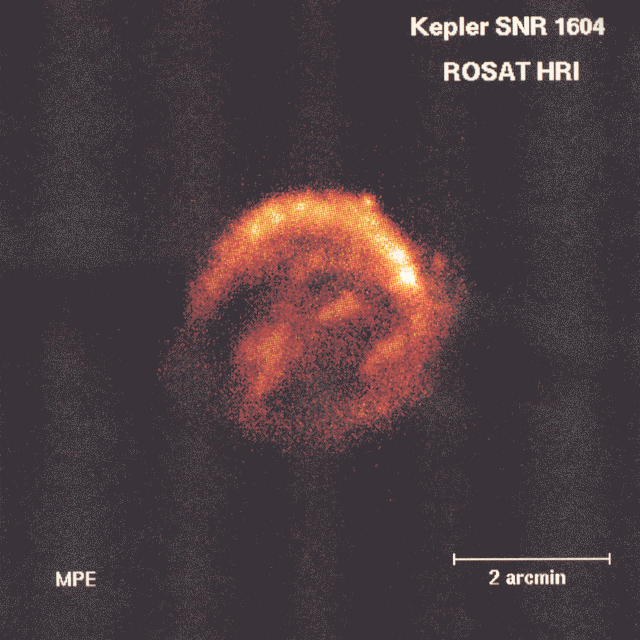
The timing of the closely spaced 1572 and 1604
supernovae was in one sense unfortunate. The telescope
was invented in 1608: If these supernovae had just held
off a few years, they could have been studied much more
intensely using telescopes!
The 1987 Supernova
We had to wait 383 years to see a nearby supernova through
a telescope. on 24 February 1987, Ian Shelton, of the
University of Toronto, noticed a supernova in the
Large Magellanic Cloud while he was on an observing trip
at the Las Campanas Observatory in Chile.
(The Large Magellanic Cloud is a satellite galaxy to
the disk of our own Milky Way Galaxy, so some might
disagree when I say that SN1987A was ``in our galaxy".)
As the first supernova detected in any galaxy in 1987,
it was designated SN1987A.
Here are before and after pictures of the supernova:
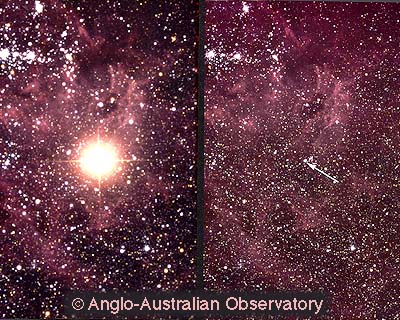
In contrast to the 1572 and 1604
supernovae, the 1987 supernova came at
a particularly fortunate time.
The supernova was visible only in the
southern hemisphere, and most large telescopes
are located in the northern hemisphere.
However, two high-quality telescopes had
just been built in the south:
at the
Anglo-Australian Observatory
in Australian (opened in 1971), and at the
Cerro Tololo Inter-American Observatory
in Chile (opened in 1974).
Both observatories have been carefully following the progress of the
supernova. So has the Hubble Space Telescope. Here
is a Hubble image of the ring of material ejected from the supernova explosion:
